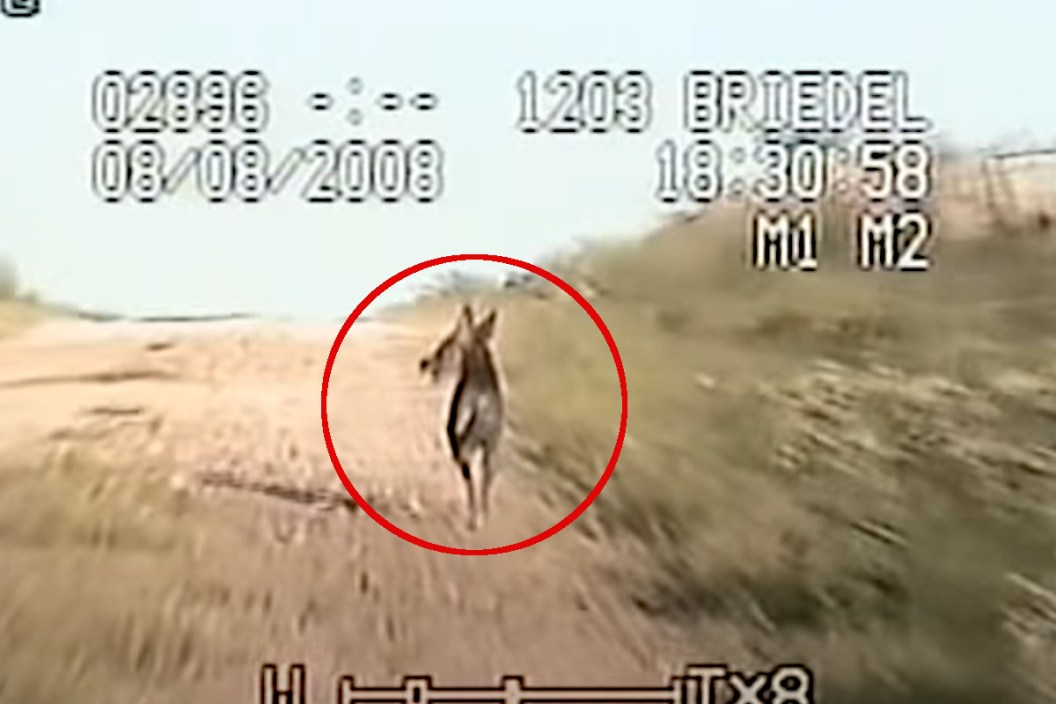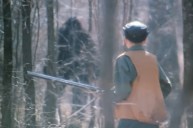Everyone loves a good urban legend story, and few groups of people are more familiar with such stories than outdoorsmen. Something about the subjecting yourself to the hands of Mother Nature and being one with the wilds surrounding you summons top-shelf folklore. Surely you've heard endless stories and firsthand claims of legendary creatures like Bigfoot or the Loch Ness monster at some point. There are enough alleged encounters to get any one of us looking around to make sure reality and myth don't intersect right before our very eyes. Perhaps it's that same vulnerability that has kept these mythical creatures comfortably secured in American folklore for hundreds or even thousands of years.
The legendary Chupacabra presents a different kind of paranormal intrigue, however, as its tales are still fairly young. The first alleged Chupacabra sightings started in Puerto Rico before eventually spreading to parts of Texas, Mexico, and South America. Today, the name is known worldwide and has spawned a cult following that's simply hard to ignore.
The descriptions of this mysterious creature vary greatly, but the most disturbing part of every story seems inspired by modern-day horror films. The creature allegedly sucks the blood of its victims, which are usually farm animals. It's certainly a bizarre twist to the legend, but does any of it carry any truth?
Origins and descriptions of Chupacabra
The name, "El Chupacabra" only became a household name around 1995 or so, which makes in unique in comparison the vast majority of famous cryptids. It was March of that year when the carcasses of farm animals first started turning up with unusual puncture wounds in Puerto Rico. It did not take long for the creature responsible to be given the name El Chupacabra, which is Spanish for "the goat sucker." It was given this name because many of the dead animals were allegedly found completely drained of blood as if they'd been attacked by a vampire.
As the bodies of various animals started piling up, people became frightened of what kind of creature could be causing this kind of damage. In August of 1995, the legend of the Chupacabra exploded like gas on an open fire after a woman named Madelyne Tolentino claimed to be the first to see the creature in Canóvanas, Puerto Rico, a town about 15 miles outside of Old San Juan.
In a 1996 interview with UFO Digest, she described a 4-foot-tall creature walking on two legs much like a kangaroo. She said it had long arms, and three fingers on its hands and three toes on each foot. She described the eyes as dark grey with no whites, and the hair as dark and short. She claimed to have seen the creature again Jan. 4, 1996, and recalled seeing orange or red eyes.
Many sightings since then have been close to Tolentino's sighting, but there are quite a few variations in the descriptions. Many claim there was no hair, and green or gray skin, and some descriptions include a row of spines running down the back of the creature. For the most part, however, the legend's split between two wildly different descriptions, with the more common description being a wild dog-like creature that resembles a hairless coyote or wolf.
In any case, as more bodies piled up and eyewitness reports started to increase, the stories made worldwide headlines. Before long, reports of strange alien-like creatures or canids were coming in across Mexico and the southern U.S., as well as down through central America as far south as Chile. People speculated everything from visiting aliens from another world to a government experiment gone wrong. As these stories gained popularity, someone noticed the similarities between current events and mysterious livestock killings that occurred in Moca, Puerto Rico, back in 1975. Much like the new reports, the animals allegedly were drained of blood. The attacks abruptly stopped in July of that year and were largely forgotten by most until the Chupacabra claims surfaced 20 years later.
Chupacabra "bodies" surfacing
In the mid-2000s, stories of the Chupacabra being a dog-like beast continued to increase. Along with that description came a sudden wave of strange bodies many people claimed were the beast. The photos of such bodies began to go viral, reaching millions through forwarded emails and electrified message boards. According to Texas Observer, the first one of these reports came in 2000 in Nicaragua, where a rancher shot a strange dog-like creature that apparently had been harassing his livestock.
It later turned out the animal was nothing more than a dog suffering from a severe case of mange, but it seemingly opened the flood gates for bevy of Chupacabra bodies to be found anywhere and everywhere. One of the most famous of these bodies was found in Texas in 2007 by Phylis Canion, a nutritionist whose chickens kept turning up dead on her ranch. Eventually she saw a strange hairless creature running around on her property.
Canion and her husband attempted to use trail cameras to capture an image of the strange animal without success, but she did manage to get proof of some bizarre activity. In July, she discovered a strange, hairless carcass that had been struck by a car near her ranch. The story instantly went viral, launching Canion to the forefront of Chupacabra lore. Was this the Puerto Rican legend at last, though? Not quite.
Texas State University-San Marcos ran a series of tests on the strange animal and biologists there were able to conclude in November of 2007 it was just a coyote, albeit one that was likely suffering from the parasitic mites like Sarcoptes scabiei that cause mange. These mites cause an itchy skin rash that leads to severe hair loss and later death in most animals.
Since then, there have been countless other reports of strange hairless dogs or coyotes. One of the more famous suspsects was captured in the 2008 dash camera included above. Bodies continue to surface every now and then, several of which were also the subject of scientific analysis with similar results.
Other possible explanations
The mangy coyote explanation seems to make the most sense for the majority of dog-like Chupacabra sightings, which follows the common theme of mistaken identity cited in most unknown cryptid reports. To be fair, though, a hairless dog or coyote is extremely strange looking, especially if you happen to encounter one in the dark with just streetlights to spot it. It doesn't take much for your imagination to run wild from there, especially if you get surprised by one.
However, it gets a little harder to come up with a rational explanation for the bipedal reports, but most skeptics dismiss them as nothing more than an elaborate hoax. There are two other possible explanations, however. The first is that eyewitnesses in Puerto Rico in 1995 were misidentifying escaped laboratory monkeys. The second theory comes from Hollywood, as Chupacabra investigator Benjamin Radford has suggested the hit 1995 movie "Species" likely played a part in creating some of the hysteria. The movie features an alien creature that assumes human form, presenting a figure that bears a striking resemblance to Chupacabra reports. Coincidentally, the film was released in Puerto Rico around the same time the reports started, so make of that what you will.
But what about those bodies of livestock, you might ask? Well, plenty of necropsies have been done on the alleged victims of the beast. Most have revealed the bodies were not really drained of blood at all, leading many scientists to theorize a simple exaggeration within the claims. While there may be plenty of plausible explanations to debunk theories surrounding this mystery, at this point, the legend of the Chupacabra is firmly entrenched in local folklore and pop culture.
For more outdoor content from Travis Smola, be sure to follow him on Twitter and check out his Geocaching and Outdoors with Travis YouTube channels.




